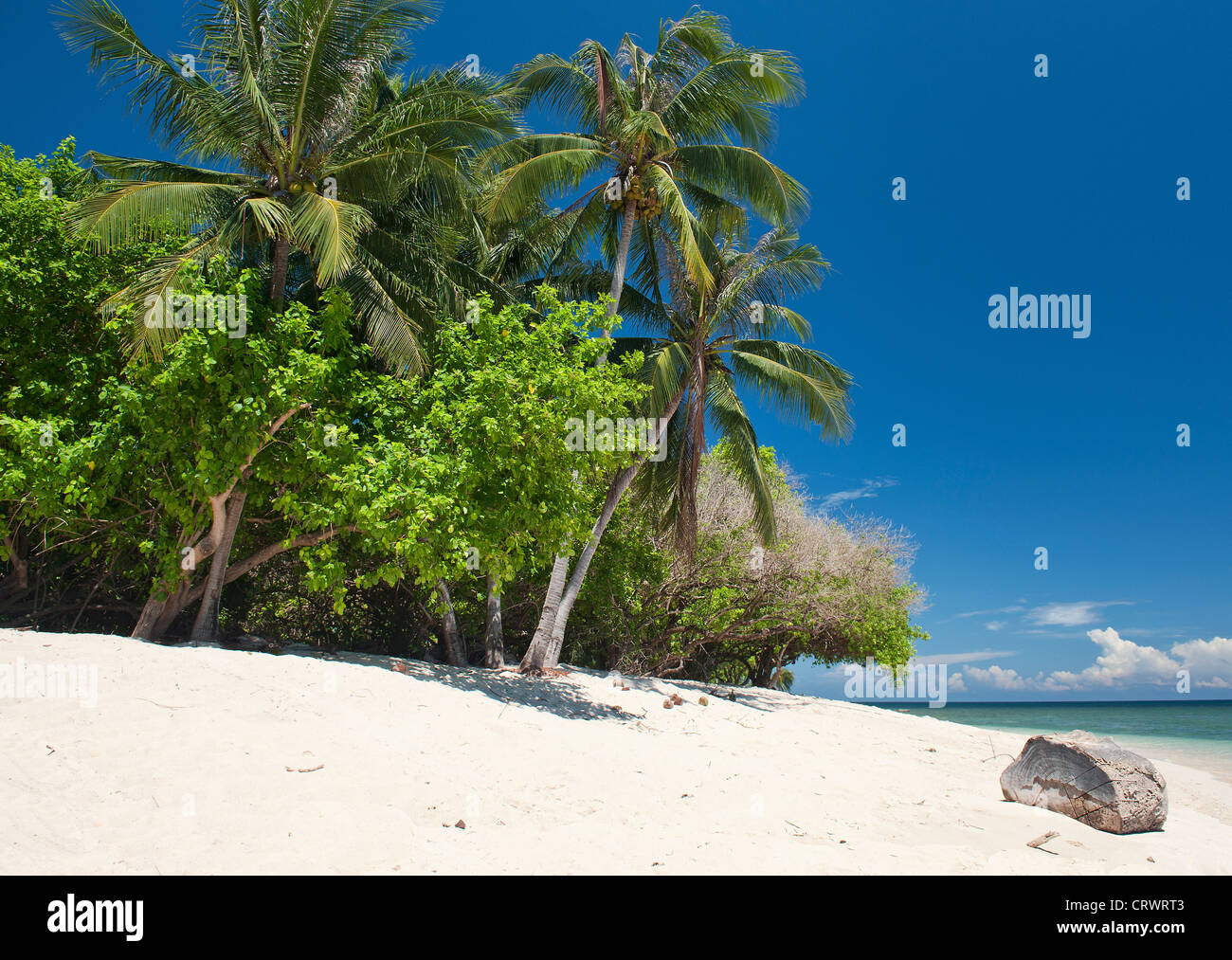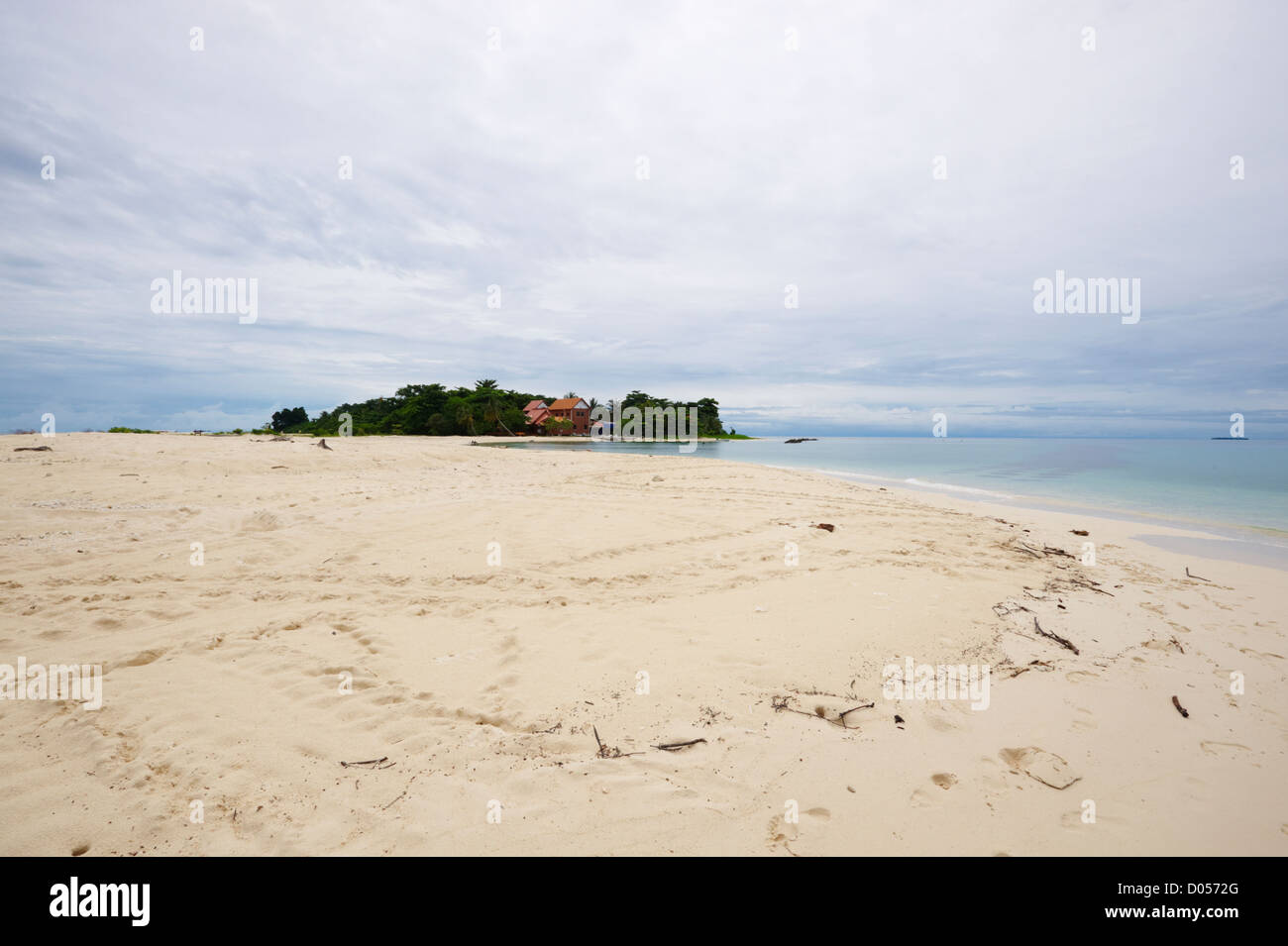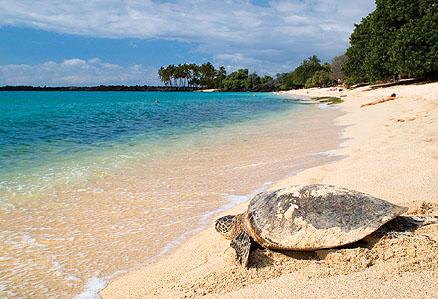
Selingan Island: Where Ancient Rituals Meet Modern Conservation
Off the northeastern coast of Sabah, Malaysian Borneo, lies Selingan Island, a small, unassuming speck of land that carries an immense weight of global significance. This emerald jewel in the Sulu Sea is not merely a tropical paradise; it is the beating heart of one of the world’s most vital marine turtle conservation efforts, a sanctuary where ancient rituals of life and survival play out nightly under the watchful eyes of dedicated conservationists and privileged visitors. Selingan Island, the primary and most accessible component of the Turtle Islands Park, stands as a testament to what focused conservation, supported by responsible ecotourism, can achieve for endangered species.
The journey to Selingan is itself a prelude to the extraordinary. A boat ride from Sandakan cuts through the azure waters, leaving the urban sprawl behind for an increasingly pristine marine landscape. Upon arrival, the island reveals its modest infrastructure: a research station, a hatchery, and a handful of chalets for the limited number of daily visitors. This deliberate minimalism underscores the island’s true purpose: it is a haven for turtles, not a resort for mass tourism. The philosophy here is simple yet profound: the needs of the turtles dictate everything.
For thousands of years, sea turtles have navigated the vast oceans, returning unerringly to the same sandy shores to lay their eggs. Selingan Island is one such sacred ground, predominantly for Green Sea Turtles (Chelonia mydas) and, to a lesser extent, Hawksbill Sea Turtles (Eretmochelys imbricata). These magnificent reptiles, survivors from the age of dinosaurs, face unprecedented threats in the modern era – habitat loss, plastic pollution, climate change, and historical poaching. Selingan Island Turtle Island Park, established in 1977, directly addresses these challenges by providing a safe haven for nesting and ensuring the highest possible survival rate for their offspring.
The magic of Selingan truly begins after dusk. As twilight descends, painting the sky in hues of orange and purple, visitors gather, their anticipation palpable. Unlike typical wildlife encounters, there’s no guarantee of when a turtle will arrive, only the certainty that they will. Park rangers, the unsung heroes of Selingan, patrol the beaches, scanning for the tell-tale tracks of a mother turtle emerging from the surf. When a turtle is spotted, the call goes out, and visitors are ushered, in hushed reverence, to witness one of nature’s most primal spectacles.
To see a majestic Green Sea Turtle, often weighing hundreds of kilograms, laboriously digging her nest in the sand is a profoundly moving experience. It is a slow, methodical dance, an instinctual act driven by millions of years of evolution. The sheer effort involved, the trance-like focus of the mother turtle, is mesmerizing. Once the nest is ready, she begins to lay her clutch, often over a hundred soft, leathery eggs, each one a fragile promise of future life.

This is where human intervention, guided by scientific understanding, becomes crucial. To protect the eggs from natural predators (monitor lizards, birds, crabs) and, historically, from poachers, rangers carefully collect each egg as it is laid. This process, while seemingly intrusive, is a vital conservation measure. "Every single egg we protect, every hatchling we release, is a victory against overwhelming odds," explains a park ranger, whose words echo the sentiment of the entire team. The collected eggs are then meticulously transferred to the island’s central hatchery, a fenced-off area of sand where they are reburied in carefully marked nests, safe from harm. This practice has dramatically increased the hatching success rate from a natural 20-30% to over 90% on Selingan.
The hatchery itself is a fascinating hub of life. Row upon row of marked plots indicate the species, date of laying, and estimated hatching date. Here, temperature and environmental conditions are monitored, crucial factors that can even influence the sex ratio of the hatchlings. Warmer sand tends to produce more females, a growing concern with global warming.
The second highlight of the night, often more emotionally impactful than witnessing the laying, is the release of hatchlings. From the controlled environment of the hatchery, hundreds of tiny, energetic turtles, having just emerged from their nests after an incubation period of 50-70 days, are gathered. Visitors are given the extraordinary opportunity to gently place these miniature mariners on the sand, just meters from the breaking waves.
The sight of these "tiny torpedoes of hope," as one visitor aptly described them, scrambling instinctively towards the ocean, is both exhilarating and poignant. Their journey is fraught with peril; only an estimated 1 in 1,000 hatchlings will survive to adulthood. Yet, each determined crawl towards the vast, unknown ocean is a powerful affirmation of life’s resilience and the critical role Selingan plays in giving them their best possible start. "It’s not just seeing turtles; it’s being part of their survival story," remarked a tourist from Europe, encapsulating the profound connection visitors feel.
Selingan Island’s success is not accidental. It is the result of decades of dedicated research, meticulous data collection, and unwavering commitment from the Sabah Parks department and its rangers. Every nesting event is recorded, every turtle tagged (if it hasn’t been already), providing invaluable data on nesting patterns, population trends, and migratory routes. The park boasts impressive statistics: an average of 7,000 to 8,000 nests are recorded annually across the Turtle Islands Park, with Selingan being the busiest. This consistent data allows scientists to monitor the health of the turtle populations and adapt conservation strategies as needed.
However, the work is far from over. The threats facing sea turtles are complex and pervasive. Plastic pollution, particularly discarded fishing nets (ghost nets) and single-use plastics, continues to entangle and kill turtles. Climate change poses a long-term existential threat, altering nesting beaches, increasing sea levels, and potentially skewing sex ratios. Poaching, though significantly reduced in the park area, remains a concern in broader regions.
Selingan Island serves as a critical educational platform, raising awareness about these challenges. The limited number of visitors (capped at around 50 per night) ensures minimal disturbance to the turtles and provides an intimate, educational experience. The revenue generated from these visitors directly funds the park’s operational costs, ranger salaries, and ongoing research, making responsible ecotourism an integral part of the conservation model. This delicate balance between tourism and protection is a cornerstone of Selingan’s philosophy. Visitors leave not just with incredible memories, but often with a renewed sense of responsibility towards marine conservation.
Beyond its immediate impact on turtle populations, Selingan Island Turtle Island Park represents a broader aspiration: to protect and preserve biodiversity for future generations. It is a beacon of hope in a world grappling with environmental degradation, demonstrating that with concerted effort, scientific rigor, and public support, even the most vulnerable species can be given a fighting chance.
As the boat departs Selingan the following morning, leaving behind the sandy shores where ancient life cycles continue, visitors carry with them more than just photographs. They carry the indelible memory of a powerful, primal connection to nature, a deeper understanding of conservation, and perhaps, a quiet commitment to becoming stewards of our planet. Selingan Island is not just a destination; it is a profound lesson in the enduring power of life and the crucial role humans can play in safeguarding it. It is a place where every tiny turtle hatchling’s struggle towards the sea becomes a symbol of hope for the entire marine world.



